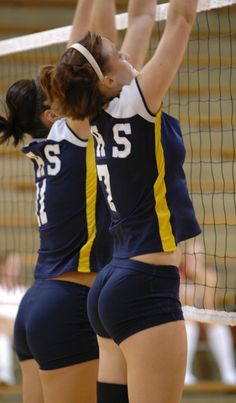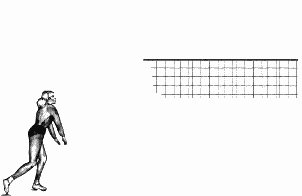How Many Players Are There in Volleyball?
It is estimated that there are over 800 million people actively playing volleyball at least once a week. With an equally large spectator following. Beginning in the United States, the game’s popularity has grown. And spreading worldwide and captivating many of us with its fast pace and competitive, team-play nature. With participation numbers like the above, volleyball ranks just behind soccer in team sport’s popularity; in fact, Brazilians are the world’s biggest enthusiasts, volleyball being the nation’s number one sport, taking a surprise top place against the country’s renowned ‘second religion’: soccer.

The Gender Divide
Volleyball is dominated by girls and women. A 2007 study found that approximately 73% of all players under 17 years of age were female. In the USA, volleyball ranks as the fifth most popular varsity sport. Even though less than 6% of high school volleyball players progress to varsity level. The number of male players is set to rise. However, with a large number of initiatives being rolled out across the states to encourage boys of school age to take an interest.
On the Court
Whilst leagues might have differing rules on the number of volleyball players a team can have at any given time. There are some general rules when it comes to competing on the court. Each side can have up to 12 players on the scorecard, named and numbered; of the 24, only 12 play opposite one another, 6-a-side. With 6 players from each squad on the court, this allows the teams up to 6 other players on the bench for substitution purposes. Any other players not named on the scorecard may be benched but cannot play.
It is the coach’s responsibility to select the right players from amongst his squad to utilise the strongest set of abilities across the court. The positions the coach can place a player are named as follows: outside hitter (or left hitter/wing spiker); right hitter (or opposite hitter); setter; middle blocker (or centre); libero; and defensive specialist.

There are a number of different rotations a coach can opt for in order to favour offense, or defence, or any other strategy that appears fitting. What doesn’t change is the kind of player suited to each of the roles. The outside hitter is the big attacker in the team and will likely be a strong jumper to land those crucial front-of-court spikes. The right hitter, like the outside hitter, will normally excel at jumping, and can play both front and back court. They often back up the setter during an attack. Setters are the driving force of the attack; they are required to make quick judgments on calling plays and communicating this effectively with the rest of the team. By observing the opponents play and tactics the setter is usually well placed to set the ball up for attack, hence the name setter.

Typically, the tallest player on the team assumes the middle blocker position.
Their height is an advantage in the centre of the court, where they are tasked with defending attacks from their rivals. Speed and agility are key weapons in this player’s arsenal; since they are in the middle of the court they can essentially move anywhere, as needed. The libero is a staunch defender, bringing up the rear and receiving the opponent’s serve. A player with exceptional accuracy in passing is normally chosen to represent the libero position, given that they are in a great position for setting up balls. Finally, we have the defensive specialist, a player who is able to take any spot on the court and prohibit the opposite team from finding a weak point in the defence. Defensive specialists are versatile volleyball players, with the responsibility of playing front of court if called upon, something the libero does not do.